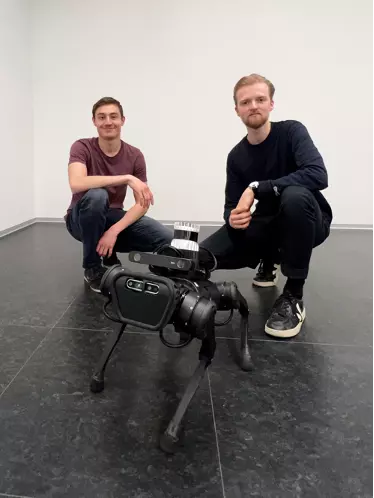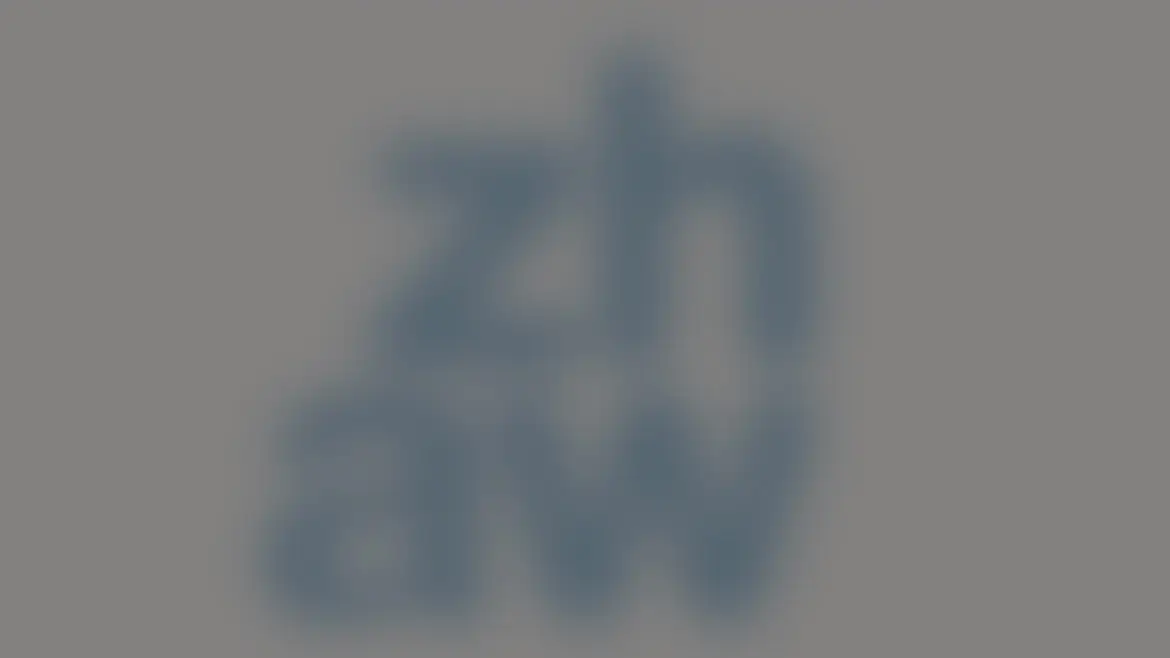Heel! Robodog – Made Possible By AI
Two bachelor students have «trained» the ZHAW robot dog using a LIDAR system, which uses light and distance measurements to detect objects and obstacles. This enables the robot dog to navigate safely through its environment.

The Centre for Artificial Intelligence (CAI) at the Zurich University of Applied Sciences (ZHAW) trains future talents and conducts research of novel AI technologies. Additionally, the CAI aims to inform the public on the potential and limitations of AI systems. As part of this initiative, the CAI owns a Unitree A1 Quadruped Robot (a “robot dog”), which is being further developed mainly through student projects.
Gesture Recognition
During the autumn semester of 2022, computer science students Tenzin Langdun and Martin Oswald "trained" the robot dog and taught it to recognise gestures. With a built-in camera, the robot identifies simple hand signals and performs corresponding actions. "The recognition of these gestures works reliably. With an accompanying visualisation, it is possible to gain an insight into the functionality of AI algorithms. This is one of the reasons why the robot dog is a popular attraction at various events," explains Pascal Sager from CAI. During their work, Martin and Tenzin also identified and resolved gaps in the developed system.
Safe Walk
Recently, the robot dog changed owners. The two students Juri Pfammatter and Daniel Schweizer added a LIDAR system to the robot. This system creates a 3D point cloud of the environment using light to measure distance. This provides the robot dog with information about its surroundings, which is used to detect and safely avoid obstacles or stop moving. To ensure that this safety system is continuously active, the students restructured the existing applications into ROS modules. ROS stands for "Robot Operating System" and allows the parallel execution of software components. The restructuring improves the demo because processes can be interrupted if necessary. Instead of executing a predefined programme sequence, the robot dog now reacts adaptively to its environment.
Outlook and Events
Until the completion of their bachelor thesis, Juri and Daniel plan to further increase the system’s reliability by implementing a SLAM algorithm. This algorithm allows the robot dog to create a map of its environment and estimate its spatial location within this map.
The robot dog will showcase the integration of AI into robotic systems at the following events in the coming months:
- 17 May 2023: Annual Congress of the Swiss Academy of Engineering Sciences (SATW).
- 3 June 2023: Open Day at the Mechatronics School Winterthur (MSW).
- 6 June 2023: Digital Day at Roche Diagnostics
- 7 July 2023: Night of Technology at ZHAW
If you would like to use the robot dog at your event, you are welcome to contact Pascal Sager, Head of GPU Infrastructure and AI Demonstrators at CAI, and write a mail to sage@zhaw.ch.
